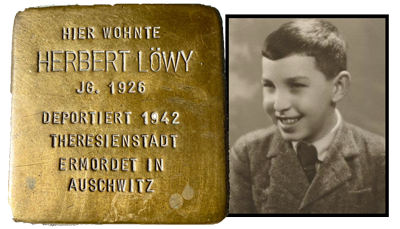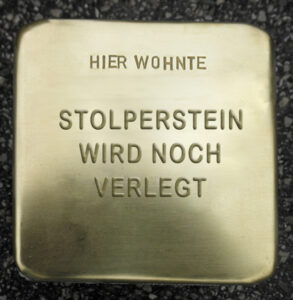Wilhelm SCHMID was born in Salzburg on March 12, 1896 in Salzburg and was baptized in the Roman Catholic Church. He was the older of the two children of Katharina and Wilhelm Schmid, who worked for many years as an official at the Salzburg Archbishop’s Consistory.
The family lived on the ground floor of the house at Kapitelgasse 2, thus in the neighborhood of the Archbishop’s Palace.
As the son of a church official, Wilhelm SCHMID studied law in Vienna and was a member of the Catholic fraternity Maximiliana, which was a member organization of the influential network called the Austrian Cartellverband (ÖCV).
Wilhelm SCHMID was a founder in 1927 of the Österreichische Aktion [Austrian Action] movement, along with August Maria Knoll, Alfred Missong, Ernst Karl Winter, and Hans Karl Zessner-Spitzenberg.
Like its French inspiration (the Action Française), the Österreichische Aktion was militantly Catholic, patriotic, and monarchist in orientation. It was a loose association that strongly promoted the idea of Austrian identity in its publications — as opposed to German nationalism, National Socialism and other promoters of a merger between Austrian and Germany (an »Anschluss«).
The Österreichische Aktion published a magazine called Vaterland [Fatherland], edited by Dr. Wilhelm Schmid. As the journal for militantly Catholic Austrians, it was fiercely opposed in heavily German nationalist Salzburg (Salzburger Volksblatt, March 10, 1934, p. 4).
The home address of the editor Wilhelm SCHMID: Salzburg, Kapitelgasse 2, was therefore well known by its enemies. It continued to be his residence, along with his exquisite private library, until the Anschluss of March 1938 when the Nazis occupied Austria and took revenge on their political opponents
Wilhelm SCHMID, a survivor of the Nazi terror, reported in retrospect:
During the first house search, most of my partly irreplaceable library was confiscated and burned at the Residenzplatz …
This was the only largescale Nazi public book-burning in Austria, and it took place in the middle of a unique historical ensemble — with the old archbishop’s residence on one side, the large baroque fountain on the other, and the massive cathedral with its towers and crosses behind it.
On the evening of April 30, 1938, the Residence Plaza served as a place of ceremonial revenge and triumph, highlighted by a call for the population to participate in the »symbolic burning of Jewish and clerical books«.
It was a vividly illustrated call, filled with symbols of power and enemies:
at the top was a large swastika giving off shining rays;
underneath in the center was an image of an exploding transept with a Christian cross and a so called Kruckenkreuz, the symbol of the Austro-fascist dictatorship;
and with a Jewish Star of David, all of which were being consumed by blazing flames at the bottom.
It was a massive act of symbolic violence, a harbinger of the real destruction of people: Karl Springenschmid, the author and teacher who directed this obscene display, left behind a charred pile of books – including world class literature by Stefan ZWEIG: burned because he was Jewish.
Burned on the Residence Plaza, but deliberately left unmentioned in the Nazi media, was the book of a courageous woman who was not Jewish, but Christian-conservative and pro-Jewish: Irene Harand.
Her book burned that day in Salzburg, was titled (in opposition to Hitler’s Mein Kampf): Sein Kampf: An Answer to Hitler (self-published by the author in Vienna, 1935).
Irene Harand was a woman who fought against anti-Semitism and racial hatred and in doing so challenged Adolf Hitler directly – so this strong, resistant woman has to be erased from public memory: damnatio memoriae.
Irene Harand continued her courageous fight in exile and was able to save some lives, so she has been honored as “a Righteous Among the Nations” at the Yad Vashem Shoah Memorial.
The resistance of Wilhelm Schmid, co-founder of the Österreichische Aktion, also remained unbroken: He refused to take the Führer’s oath and refused to participate in the war of aggression and annihilation. He was repeatedly imprisoned by the police and courts-lastly for »treacherous attacks on the state and party«.
Wilhelm SCHMID experienced the liberation of Austria, but was one of those Austrian patriots and opponents of National Socialism who were not recognized or honored by the public.
Nonetheless, documents show that Wilhelm SCHMID was a member of the Salzburg Concentration Camp Survivors Association, which was spied on by the Austrian Secutity Police during the Cold war because it was led by members of the Austrian Communist Party.
Dr. Wilhelm SCHMID died in Salzburg on December 16, 1972 at age 76.
But the book-burning could not be erased from the memory of the city of Salzburg – at least not forever.
On the evening of April 30, 1987 – exactly 49 years after the performance of symbolic violence on the Residence Plaza – the writer Erich Fried gave a moving speech at the same place:
The debt of gratitude
[…] We must not forget that even today we still have much evil to experience thanks to him [Adolf Hitler]. Simply condemning book burning while not fighting is not enough to prevent new book burnings—and it is not enough to prevent the burning of the entire world. That’s what I wanted to say.
Salz. Salzburger Literaturzeitung, June 1987
Sources
- Archive of the Salzburg Archdiocese: Matriculation books
- Salzburg City and State archives: Police registration files, local citizenship records, and Victim Support files
- Resistance and persecution in Salzburg 1934-1945, vol. II, Vienna 1991, pp. 32, 34, 602
- Vaterland. Blätter für katholisches Österreichertum, Hg. Wilhelm Schmid (Riposte in Salzburger Volksblatt, March 10, 1934, p. 4)
- Irene Harand: Sein Kampf. Antwort an Hitler, Selbstverlag, Wien 1935 (self-published by the author, French and English translations)
- Invitation (call) for the »symbolic burning of Jewish and clerical books« on April 30, 1938 (German Historical Museum Berlin)
- Poster of the Salzburger Autorengruppe for the commemorative event on April 30, 1987 on the Residenzplatz
- Salz. Salzburger Literaturzeitung Nr. 48, June 1987, pp. 5-9
Translation: Stan Nadel
Stumbling Stone
Laid at Salzburg, Kapitelgasse 2

